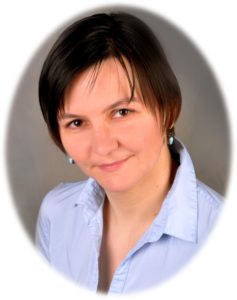ESPOO, Finland, 29th August 2019 – Picosun Group, the leading supplier of AGILE ALD® (Atomic Layer Deposition) thin film coating solutions, reports excellent results obtained with its next generation R&D PEALD (plasma-enhanced ALD) technology.
PEALD enables deposition at low temperatures and of several materials that could not be deposited with thermal process only. The drawback of PEALD, however, is damage to the sample surface, caused by ion bombardment. Picosun’s solution to this is remote plasma method, where the plasma source is located high enough above the sample, and the reactive species hitting the surface are radicals, not high-energy ions.
PEALD enables deposition at low temperatures and of several materials that could not be deposited with thermal process only. The drawback of PEALD, however, is damage to the sample surface, caused by ion bombardment. Picosun’s solution to this is remote plasma method, where the plasma source is located high enough above the sample, and the reactive species hitting the surface are radicals, not high-energy ions.
“Picosun’s operating philosophy is based on constant improvement and development, as we want to offer our customers always the best-in-class, leading quality ALD solutions. Our Picoplasma™ equipment has been a hit product in the R&D community since its launch, and we have now upgraded it to a completely new level, to enable even faster processing with superior film quality and purity,” says Dr. Jani Kivioja, CTO of Picosun Group.
Picosun’s next generation PEALD solution is based on remote, high power microwave plasma (MWP). The compact, lightweight plasma generator can be integrated to existing PICOSUN® R&D ALD reactors as such. The new plasma-ALD solution realizes deposition with virtually no added particles, with extremely low metal contamination and with far shorter cycle times compared to the previously used method. Excellent film quality and uniformity have been obtained(*), and the new MWP allows wider operating range (in terms of plasma parameters) which widens also the selection of available ALD processes.
“We are pleased to provide our customers with our new, thoroughly upgraded plasma-ALD solution. There are several important application areas, such as medical devices and MEMS, where substrates are sensitive and require processing at low temperatures. Now we have an ideal solution to this, which will again facilitate ALD’s breakthrough to yet new components and devices,” continues Dr. Kivioja.
(*) Film properties, SiO2 as an example:
Picosun’s next generation PEALD solution is based on remote, high power microwave plasma (MWP). The compact, lightweight plasma generator can be integrated to existing PICOSUN® R&D ALD reactors as such. The new plasma-ALD solution realizes deposition with virtually no added particles, with extremely low metal contamination and with far shorter cycle times compared to the previously used method. Excellent film quality and uniformity have been obtained(*), and the new MWP allows wider operating range (in terms of plasma parameters) which widens also the selection of available ALD processes.
“We are pleased to provide our customers with our new, thoroughly upgraded plasma-ALD solution. There are several important application areas, such as medical devices and MEMS, where substrates are sensitive and require processing at low temperatures. Now we have an ideal solution to this, which will again facilitate ALD’s breakthrough to yet new components and devices,” continues Dr. Kivioja.
(*) Film properties, SiO2 as an example:
| Wafer size | Dep. temperature | GPC | Film non-uniformity (1σ, 5mm EE, 49pts) | Leakage current (@4MV) | Particles (@>0,25µm) | Metal contamination (Fe, Ti, Cr, Mn, Ni, Cu, Zn atoms) |
| 200 mm | 400 °C | 0.86 Å/cycle | 1.7 % (~10 nm film) | 2.1 x 10-8 A/cm2 | < 60 | < 2 x 1010 /cm2 |



%20(1).png)






 Lecture, part I
Lecture, part I Lecture, part II
Lecture, part II












